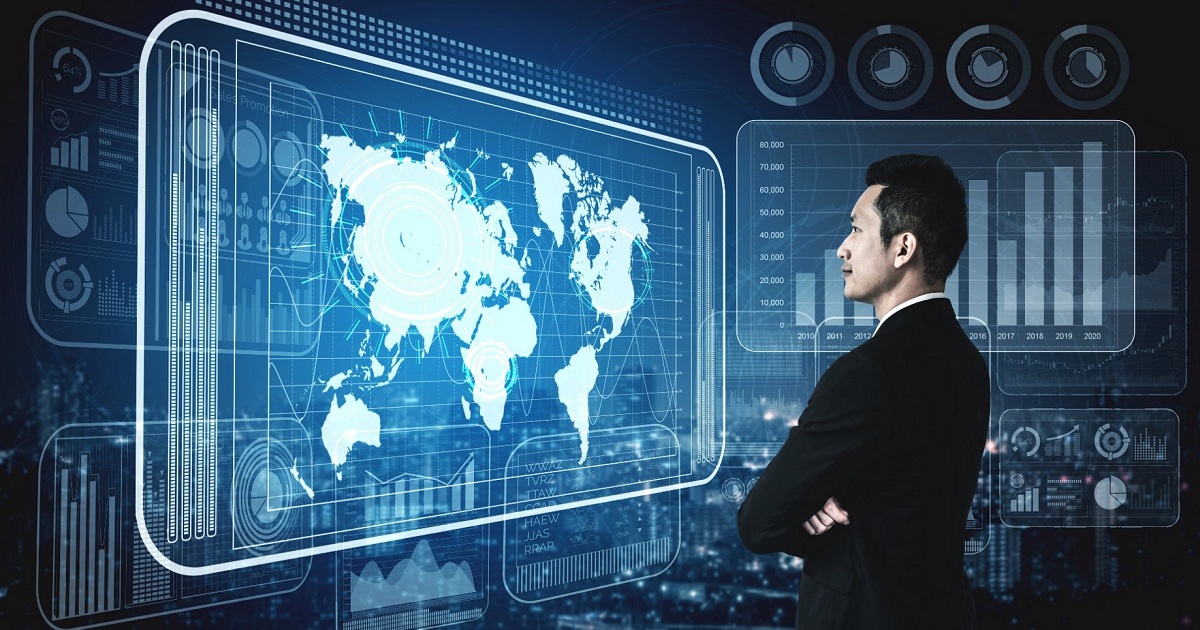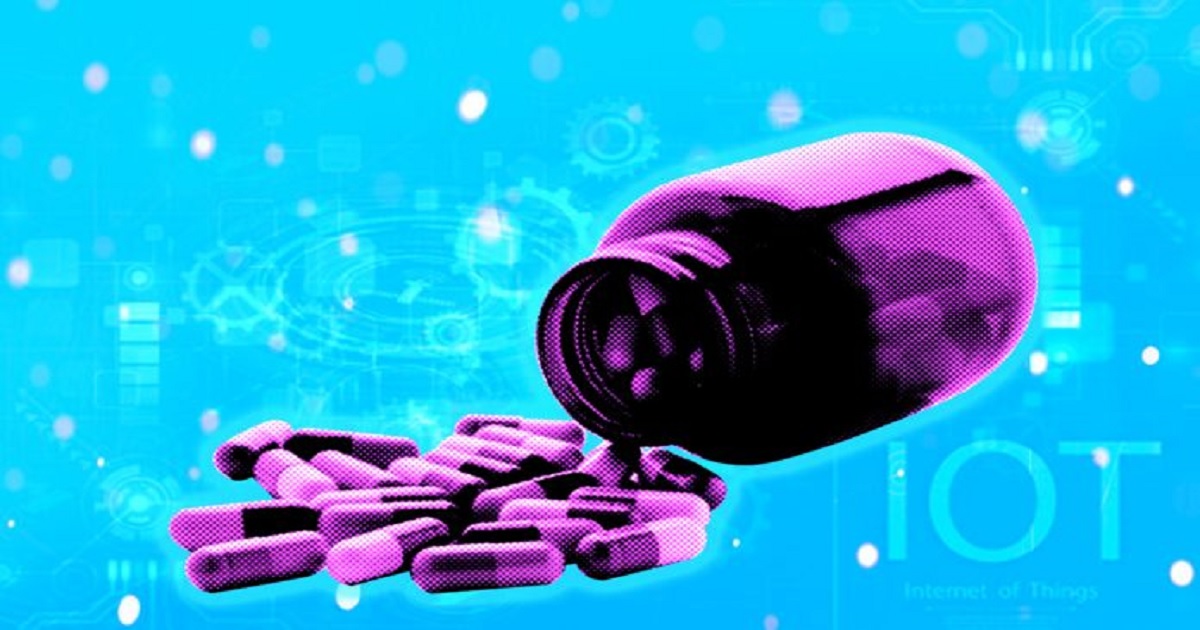
Security, IoT Security
Article | July 13, 2023
The COVID-19 pandemic turned the tides towards remote work and virtual connectivity. And even though growth seemed to have slowed down in 2020, experts see double-digit growth in the next few years. The tides may be turning but virtual connectivity and the tools required for remote growth are not slowing down in demand. As the tech world adapts to new shifts, IoT is among one of the most anticipated technologies to prosper in 2021.
Digital transformation has rapidly accelerated in the past year and if the experts are to be believed, 2021 shows promise for an even better year for technological advancement. According to IDC’s 2020-2024 forecast, spending will reach an annual growth rate of 11.3 percent. And with this, the number of connected devices is likely to grow up. Take a look at what will be the focus of IoT industry trends in 2021.
Privacy & Security
As smart homes are becoming the norm and you cannot throw a stone without hitting a smart device, one thing is clear—IoT devices are everywhere. People almost always forget smartphones when talking about IoT devices, but the fact is that smartphones are very much a part of the IoT ecosystem. And with the infusion of IoT in our everyday lives, questions about privacy and security are cropping up.
Just recently, as WhatsApp announced its new privacy policy, millions of users planned to migrate to other alternatives. This led to WhatsApp pushing back its privacy update and tech businesses taking note of changing winds.
In 2021, privacy and security will be at the forefront of IoT industry trends, as devices infuse further into the everyday lives of people. According to recent research, 90 percent of consumers lack confidence in IoT device security. And the onus of bolstering consumer confidence will be up to IoT businesses.
Workforce Management
According to Gartner’s “Top Strategic Technology Trends For 2021” report, IoT will be a large part of the office experience in 2021. As businesses are trying to avoid the losses that occurred in early 2020, workplaces are being geared up with RFID tags, sensors, and monitors to ensure social distancing measures, whether employees are wearing masks and overall health monitoring.
Additionally, many organizations have decided to move permanently to a remote mode and will rely more on IoT devices for connectivity. So we can expect better automated scheduling and calendar tools, more interactive video conferencing, and virtual meeting technology. In the case of fieldwork, IoT will offer an added factor of monitoring behavior.
Greener IoT
Experts predict that energy will be a crucial factor in the IoT industry trends in 2021. With smart grids, metering, and restoration resilience being powered by IoT, 2021 will move towards optimized energy consumption and devices that are designed to encourage energy-friendly practices.
What’s more? Smart engines and automobiles can be optimized to reduce their carbon footprint and become energy-friendly. As evidenced by the Paris summit and the wildfires in 2020, the world is becoming ecologically conscious. IoT devices in 2021 will focus heavily on reduced emissions, lowering air and ocean pollution, and minimizing power expenditure.
Location Data
As COVID-19 limited human interaction, location-based services soared during the pandemic. Businesses started leveraging location data to offer curbside pickup, virtual queues, and check-ins for reservations to enhance the customer experience during the pandemic.
According to experts, the use of location data will continue to be crucial for customer service and convenience in 2021. As people prefer being safe even as the vaccines are being delivered, location data will allow businesses to cater to their customers without compromising on customer or employee safety.
Digital twins
IoT is being helmed as the perfect technology partner for creating digital twins in many industries. As IoT collects a large amount of data through physical devices, this data can be reinterpreted to create the perfect digital twins. Also, IoT can offer visibility into the full product life cycle and unfold deeper operational intelligence. Companies like Siemens are already leveraging technologies like AIoT to design and create digital twins for product design and production. Coupled with AI, IoT will be used more commonly for creating digital twins in 2021.
A technology as dynamic as IoT can be leveraged for almost any application. Therefore, it may surprise us all in the way it progresses in 2021. However, experts believe that the above 5 IoT industry trends will rule 2021 for sure.
Frequently Asked Questions
What are the latest IoT industry trends?
The use of IoT in Healthcare, Artificial Intelligence, workforce management, and ecological conservation can be deemed as some of the latest trends in IoT.
What is the future scope of IoT?
As experts believe there will be over 85 billion connected devices by the end of 2021, and the numbers are promising for upcoming years, we can safely say that the future of IoT is indeed bright.
What industries are most likely to use the Internet of things technology?
IoT is a dynamic technology with applications in almost every industry. However, industries like healthcare, construction, manufacturing, tech, and resource management are most like to use IoT right now.
{
"@context": "https://schema.org",
"@type": "FAQPage",
"mainEntity": [{
"@type": "Question",
"name": "What are the latest IoT industry trends?",
"acceptedAnswer": {
"@type": "Answer",
"text": "The use of IoT in Healthcare, Artificial Intelligence, workforce management, and ecological conservation can be deemed as some of the latest trends in IoT."
}
},{
"@type": "Question",
"name": "What is the future scope of IoT?",
"acceptedAnswer": {
"@type": "Answer",
"text": "As experts believe there will be over 85 billion connected devices by the end of 2021, and the numbers are promising for upcoming years, we can safely say that the future of IoT is indeed bright."
}
},{
"@type": "Question",
"name": "What industries are most likely to use the Internet of things technology?",
"acceptedAnswer": {
"@type": "Answer",
"text": "IoT is a dynamic technology with applications in almost every industry. However, industries like healthcare, construction, manufacturing, tech, and resource management are most like to use IoT right now."
}
}]
}
Read More

IoT Security
Article | July 17, 2023
Explore the events on IoT security, addressing to the complex cyber security challenges and privacy issues. It caters to a variety of attendees including industrialists, students and enthusiasts.
The significance of IoT security cannot be overstated in today's interconnected business landscape. Safeguarding sensitive data and mitigating risks is paramount, making robust IoT security a non-negotiable imperative for organizations seeking to thrive in the digital age.
From industry professionals seeking to expand their knowledge to builders and buyers in the market, these events provide a comprehensive platform to learn, connect, and discover the possibilities of scaling with IoT. Attendees can connect with buyers, sellers, and innovators, fostering meaningful connections and exploring potential business opportunities. At these industrial IoT conferences 2023 and beyond, attendees can immerse themselves in a vibrant atmosphere of innovation and collaboration.
1. IoT Tech Expo
September 26-27, 2023 | RAI (AMSTERDAM)
The IoT Tech Expo Europe is a prominent event that serves as a platform for exploring the latest innovations, solutions, and strategies in the field of IoT, digital twins, enterprise transformation, IoT security, and edge platforms. It promises two days of top-level content and thought leadership discussions. Industry experts, including keynote speakers and panelists, will share their unparalleled industry knowledge, real-life experiences, and insights through solo presentations, expert panel discussions, and in-depth fireside chats. Some of the key sessions will include panel discussions on staying on track with digital twins, examining their pitfalls across industries, and exploring the incorporation of other technologies like AI, ML, and Blockchain for agile processes. Notable speakers in this domain include Bruno Ávila, i-Team Director - Digital Urban Planning Lab, City of Amsterdam; Ben Lomax Thorpe, Head of Digital Twin, among others. Additionally, the event showcases success stories and case studies from organizations leading the way in digitalization and IoT implementation.
2. International Conference on the Internet of Things
November 7-10, 2023 | Nagoya (Japan)
This event brings together leading researchers, industry experts, and stakeholders in the IoT field. This conference serves as a platform for visionary and groundbreaking research, fostering innovation in various IoT verticals such as smart industry, smart cities, smart health, and smart environment. The 13th International Conference on the Internet of Things (IoT 2023) will include keynote speeches, research presentations, panel discussions, and interactive sessions. It will provide a platform for sharing visionary ideas, ground-breaking research findings, and innovative solutions in the realm of IoT and related fields. Nagoya, the host city for IoT 2023, will offer a captivating setting for the conference. With a focus on visionary research and innovation, the conference provides a platform for knowledge sharing, collaboration, and exploration of IoT advancements in various verticals.
3. 9th Annual IoT Security Foundation Conference
November 7, 2023 | IET (London)
The 9th Annual IoT Security Foundation Conference is a highly regarded event dedicated to IoT cybersecurity. With the increasing prominence of artificial intelligence in various industries, this year's conference will focus on the impact of AI on cybersecurity, exploring its implications for developers and cyber defenders at the forefront of the field. The call for presentations is currently open, inviting submissions on a wide range of IoT security-related themes till July 14th, 2023, with notifications of acceptance to be sent by August 18th, 2023. By participating in the IoTSF 2023 Conference, sponsors and exhibitors gain exposure within the IoT security community and can forge new customer relationships, generate leads, establish partnerships, and strengthen existing customer connections. The conference will cover a range of themes, including business, technical, operational, educational, and policy-related topics. Proposals are invited on these subjects, offering speakers an opportunity to contribute to the diverse interests of conference attendees.
4. ETSI IoT Conference 2023 (ETSI IoT Week 2023)
July 4-6, 2023 | Sophia Antipolis (France)
ETSI, the European Telecommunications Standards Institute, is organizing its annual flagship event, the ETSI IoT Conference. The conference, ' IoT Technologies for Green and Digital Transformation,' is a must-attend event for professionals involved in the Internet of Things, recognizing the significance of standard-enabled technologies for IoT service deployments. It provides a valuable platform for attendees to learn and share experiences related to IoT technologies, services, activities, and requirements, focusing on current and future standardization efforts. The 2023 edition of the conference will feature a combination of keynote speeches, presentations, interactive panels, and IoT demonstrations, creating ample networking opportunities for participants. The event will revolve around three main areas: IoT for the digital and green transformation, IoT technologies, and horizontal IoT standards for various vertical business sectors. The ETSI IoT Conference is particularly relevant for organizations and stakeholders interested in the service and operational aspects of IoT, including industry representatives, SMEs, research and development institutions, academia, decision and policy makers, as well as users of IoT standards such as cities, governments, and societal actors.
5. 4th International Conference on Big Data, Machine Learning and IoT (BMLI 2023)
August 26-27, 2023 | Dubai (UAE)
The 4th International Conference on Big Data, Machine Learning, and IoT serves as a major platform for presenting innovative ideas, developments, research projects, and approaches in the domains of big data, machine learning, and the internet of things. This event includes but is not limited to big data techniques, models, and algorithms; infrastructure and platforms for big data; search and mining in big data; security, privacy, and trust in big data. Authors are invited to submit original papers by July 01, 2023, through the conference's submission system. Additionally, selected outstanding papers will have the opportunity to be considered for publication in renowned journals such as the International Journal of Database Management Systems (IJDMS), the International Journal of Data Mining & Knowledge Management Process (IJDKP), and others. The event will provide an excellent opportunity for researchers, industry professionals, and practitioners to explore the latest advancements, share knowledge, and foster collaborations in the dynamic fields of big data, machine learning, and IoT.
6. 28th Australasian Conference on Information Security and Privacy (ACISP 2023)
July 5-7, 2023 | Brisbane (Australia)
The 28th Australasian Conference on Information Security and Privacy (ACISP 2023) is an event in the field of cybersecurity and privacy, bringing together researchers, practitioners, and industry experts from Australasia and around the world. This conference will serve as a platform to exchange innovative ideas, research findings, and advancements in information security and privacy. ACISP 2023 focuses on addressing the evolving challenges and emerging trends in the field, providing a forum for discussing theoretical and practical aspects of IoT security risks. Participants have the opportunity to present their research papers, engage in enlightening discussions, and network with professionals in the industry. The conference covers a wide range of topics related to information security and privacy, including cryptographic protocols and algorithms, security in emerging technologies, intrusion detection and prevention.
7. The Things Conference
September 21-22, 2023 | Amsterdam (Netherlands)
The Things Conference is dedicated to LoRaWAN, attracting thousands of professionals and enthusiasts worldwide. This highly anticipated gathering will serve as a hub for the entire LoRaWAN ecosystem, offering a unique opportunity to meet key players, gain valuable insights into the IoT industry, and explore the expanding LPWAN market. The event showcases a diverse range of LoRaWAN enabled security IoT devices and gateways at the Wall of Fame, where participants can interact with and experience first-hand the latest products from over 100 partners. The conference program features an impressive line-up of speakers from prominent companies such as Blues, Miromico, ELSYS, TagoIO, Edge Impulse, and more. Attendees can benefit from engaging keynotes, insightful workshops, interactive side sessions, case studies, and value-driven stories. These sessions cover various aspects of LoRaWAN, offering attendees valuable knowledge and practical guidance. One of the highlights of The Things Conference is The Things Certifications, which allow participants to showcase their expertise.
Final Thoughts
The conferences help industry experts, IT professionals, engineers, and decision-makers to gain insights and in-depth knowledge. Attendees can expect a comprehensive program consisting of keynote presentations, panel discussions, case studies, and interactive workshops. The above events will cover various topics, concerning the IoT security. Participating in these will provide networking opportunities, allowing attendees to connect with peers, share experiences, and establish valuable business connections. Leaders can stay updated with the evolving data center landscape and gain a competitive edge in their evolving technologies, to provide protection against threats.
Read More

IoT Security
Article | June 28, 2023
The nature of digital and physical security is evolving as a result of cloud-based IoT software, which enables both security components to be combined and used to exploit data better.
Commercial use of cloud-based IoT software is possible, and cloud-based solutions have some advantages in the area of security. IoT technology, which is essential to this development, is driving worldwide development in many areas and revolutionizing daily operations for many businesses.
Data is essential to success in almost every sector, and security is no exception. To better understand what's going on in your business, you can combine cloud-based solutions that contain all the information on a single interface. For instance, integrating security camera feeds with cloud-based access control systems enables real-time visual identification verification.
The Impact of Combining Physical and Cyber Security
Combining digital and physical security, often known as security convergence, helps optimize IoT and cloud-based security systems. A cloud-based physical security system needs cybersecurity software to guard against internet flaws and intrusions. Similarly, physical security measures prevent sensitive data from getting into the wrong hands. Teams for physical and cyber security might combine to provide a more comprehensive action plan. The more seamlessly all physical and digital security components are linked, the more secure and future-proof a commercial system will be.
When organizations use IoT technology, cybersecurity is a significant concern. However, by combining physical and digital security, organizations can make sure their cloud-based systems are well protected from vulnerabilities. In addition, the security and IT teams will also be better able to manage the evolving security landscape when the organization combines physical and digital security ideas.
Read More

Article | April 17, 2020
Pharma is big business, but what it’s not generally recognized is, in large part, a manufacturing business with complex supply chains, finicky chemical processes and products that have to meet stringent quality controls. Few of those outside the industry think about how drugs are made safely, efficiently and at scale with reliable quality and in precisely measured doses. Even more interesting is the simple fact that pharma often produces sophisticated drugs using manufacturing processes that are decades out of date, and which are being phased out in comparable industries, such as chemical manufacturing.
Read More